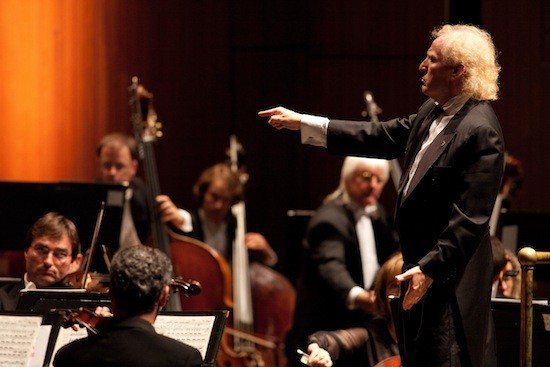
Two things pop into my head when I hear the term “musical joke.” One is something along the lines of Tenacious D or those classic Adam Sandler Saturday Night Live sketches. You know–stuff that's meant to be funny.
The other is a lot less positive and brings to mind the word “trainwreck.” We've all heard/seen this sort of musical joke, usually in the form of a teenage garage band playing a show three weeks after buying instruments, our crazy uncles thinking they are on stage at the Staples Center when in fact they are botching a Bob Dylan tune on their couches or Madonna.
]
So you can imagine my surprise when I was browsing the schedule for the Long Beach's Symphony Orchestra's performance on Saturday and came across this description:
Call me naive, but when I think of classical music, never do I think of humor. Sure, I saw Amadeus and know all about how our modern day perception of these composers is totally off base (by that, I mean we think of them as stuffy old white men in funny wigs when in fact they were the rock stars of their days…in funny wigs), but still. A musical joke? What gives?
I needed an answer, so I went to LBSO conductor Enrique Arturo Diemecke, who helped explain what exactly the term “musical joke” means in the classical world.
OC Weekly (Ryan Ritchie): What is “a musical joke?”
How will audiences know that the tunes are silly? Why is solo in
quotation marks? Are they not really soloing?
meaning, the same speed from beginning to end. But the ending sounds like
the piece was cut off suddenly. Things like
unusual sounds in the instruments or the “wrong” harmonies that would
make people believe that there was a mistake but actually was not.
How do these wrong notes sound to audiences? Is it dissonant or will most untrained ears not even tell that the harmonies are not correct?
Things had a structure that people were used to following in those days. For example, ending it (a song) like a joke
with no punchline. That is a joke in classical music.
Does the remainder of the concert have a humorous motif as well? If so, how?
have names that would relate to the grand ballrooms and the elegance of
the palaces and the way that people were dressing. Others of a place or a
river, like The Blue Danube.
The Long Beach Symphony Orchestra present The Waltz King Meets the Concerto “Emperor” 8 p.m., Saturday, Jan. 21 at the Terrace Theater, 300 E. Ocean Blvd., Long Beach. For info, call (562) 436-3203, or visit LBSO.org. Tickets are $25 to $85.


One Reply to “Long Beach Symphony Orchestra's Enrique Arturo Diemecke Explains the Musical Joke”